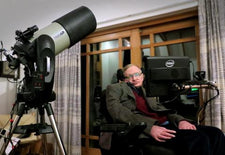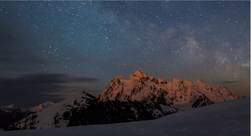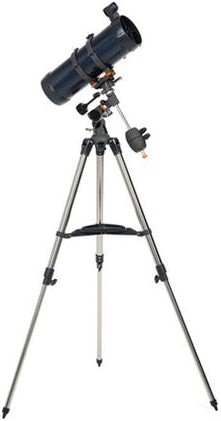What Can You See With a Telescope?
May 4, 2015
Astronomy is a fascinating lifetime hobby enjoyed by young children to centenarians, by people from all walks of life and with varied interests.
You can observe or photograph the heavens on a casual or serious basis, undertake scientific study or marvel at the wonderment of our existence. Astronomy can be a fun and relaxing way to soothe our minds and bodies from our hectic everyday life. It is a way to enjoy nature, being outside and marveling at the night sky.
So what can you expect to see with a telescope?
The Moon
Prepare for an awesome spectacle. The moon's disk has a pastel-cream and gray background, streamers of material from impact craters stretch halfway across the lunar surface, river-like riles wind for hundreds of miles, numerous mountain ranges and craters are available for inspection. At low or high power the moon is continually changing as it goes through its phases. Occasionally you will be treated to a lunar eclipse.
The Sun
It is quite safe to view the Sun if you utilize a proper solar filter. The Sun is fascinating to inspect as you detect and watch the ever-changing sunspot activity. If you are fortunate enough, and are willing to travel to remote locations, you may at some point experience a solar eclipse. For more information see our article - Observing The Sun
The Planets
Observation of planets will keep you very busy. You can see Jupiter with its great red spot change hourly, study the cloud bands and watch its moons shuttle back and forth. Study Saturn and its splendid ring structure, watch Venus and Mercury as they go through their moon-like phases. Observe Mars and see its polar cap changes or watch the dust storms and deserts bloom with life. Uranus, Neptune and Pluto can be seen easily with 8" or larger telescopes.
Star Clusters
There are two types of star clusters- (1) open star clusters (also called galactic clusters) which are loosely arranged groups of stars, occasionally not too distinctive from the background stars, and (2) globular star clusters which are tightly packed groups of many millions of stars.
Nebulae
These are glowing clouds of gas falling into two types- (1) planetary nebulae which are relatively small ball-shaped clouds of expanding gases and are believed to be the remnants of stellar explosions, and (2) diffuse nebulae which are vast, irregularly-shaped clouds of gas and dust
Galaxies
These are vast, remote "island universes," each composed of many billions of stars. Galaxies exist in a variety of sizes with regular and irregular shapes.
Comets
Magnificent comets are routinely visible through telescopes .
Double (Binary) Stars
These are pairs of stars orbiting around a common center of gravity, often of different and contrasting colors.
What you can see is dependent on a lot of factors. The most important of these for astronomy is aperture. The ability for a telescope to gather light is critical. Other important factors are optical quality, steadiness of your tripod and mount, seeing conditions, your location (city or rural), brightness of the object and your experience.



